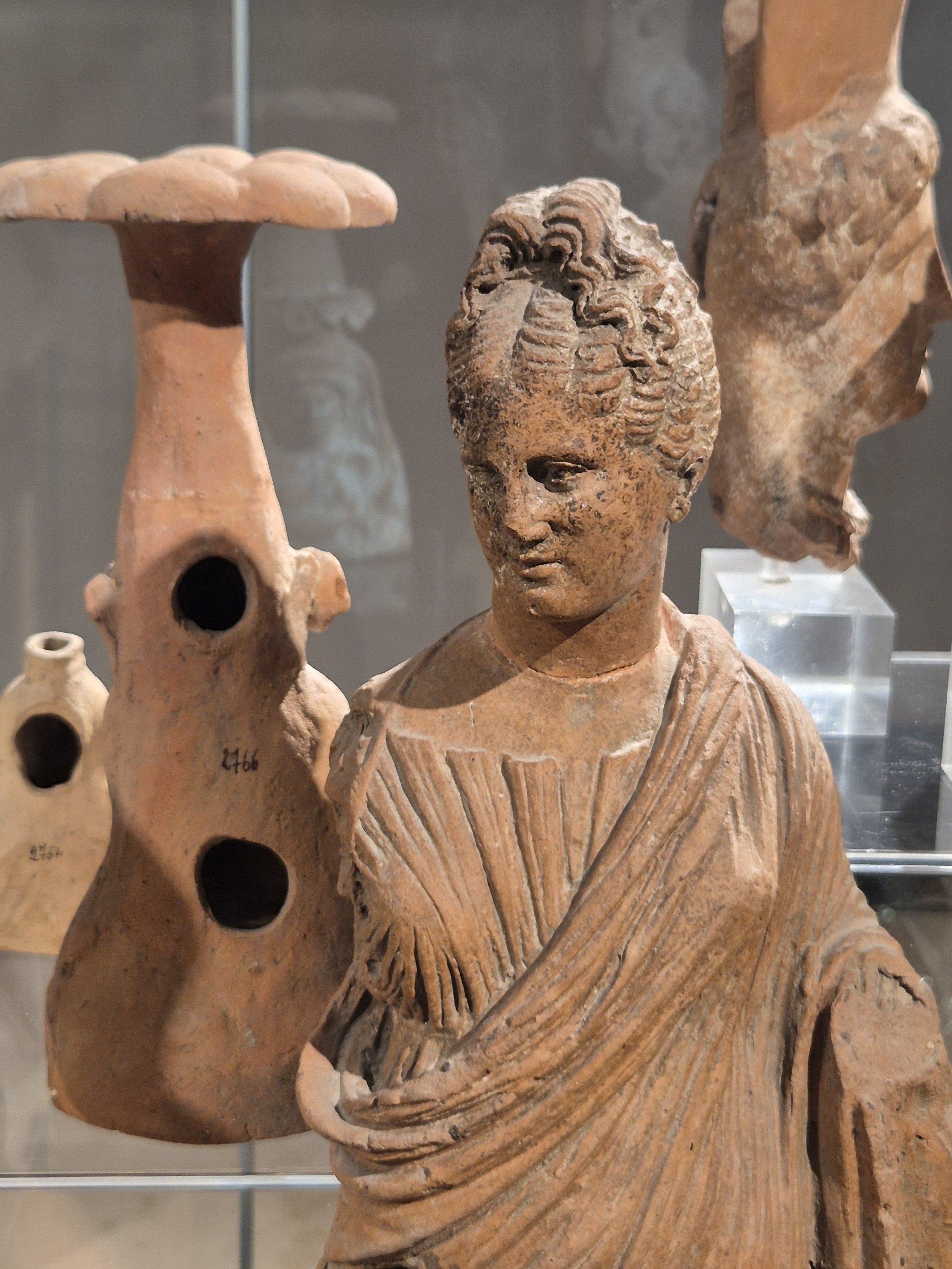On another day trip improving my knowledge of urban history ( gained from one subject in 1974), we visited Paestum on the flat coast south of Salerno. Another lesson in how immense scale and great age generates awe, and how walking around in ruins gives space for your imagination and a whole body experience.
About the ancient city: Wikipedia has a full.account, but briefly:
In 720 BCE, ancient Greeks from the Peloppenese sailed across the Ionian sea to the (now) Gulf of Taranto in Calabria and founded a colony they named Sybaris. A century later, some of the Sybarites round the west coast of (now) Calabria and almost up to (now) Salerno, and founded another colony near a river trading post they called Posiedonia after their main God.
Posiedonia grew richer as a port on the trading routes and more so around 500bce when wealthy Sybarites fled there after Sybaris was conquered by a rival city, Croton. It had three enormous Doric order temples dated around 550bce: one to Posiedon, one to Hera and one to Athena, and civic infrastructure like the agora and an ekklesiastica. After a couple of centuries, Lucanians from (now) southern Italy conquered the Greeks and renamed the city. After another century or so the romans conquered the Lucanians And renamed the city again - to Paestum. The romans added some typical roman infrastructure like a Forum, an arena and baths. Estimates put the Paestum population as at least 10,000.
After centuries of decline due to abandoned drainage, malaria and repeated attacks, Paestum was abandoned and only rediscovered in the 18th century. Luckily, what the 18th century explorers could see immediately in the fields, apart from many building foundations, were the aweinspiring skeletons of three huge sturdy two thousand year old Greek temples. Admittedly not white and brightly painted, and without roofs, but still of gigantic scale compared to a human.
Archaeologists have since unearthed some other civic structures and troves of artefacts that would have been used or given to the temples some of these are shown and explained in the Paestum museum at the site.
Looking at the small terracotta votive statues, small statues of hybrid mythical creatures, and stories on vases made me consider just how different was the mindset of these people 2,500 years ago..yet the jewellery and pots seem so similar to today's. Could I really believe a siren or a sphinx exists? No, but their forms that morph human and animal are strangely compelling today, precisely because I know they could not exist except in myth. Today they seem to demand that you enter a world that does not exist: how interesting !
We wandered around the remains of the city uncovered so far in the extensive archaeological park, seeing a few floor mosaics, imagining the buildings, and gazing at the temples: a great experience.




















